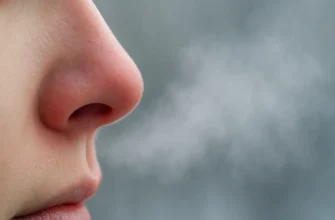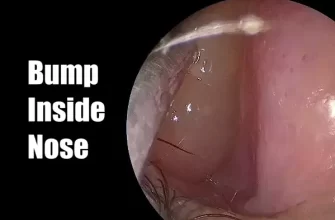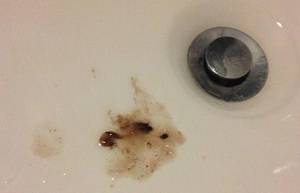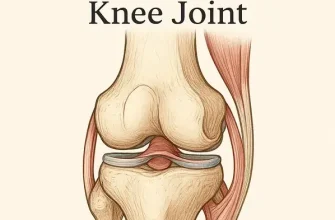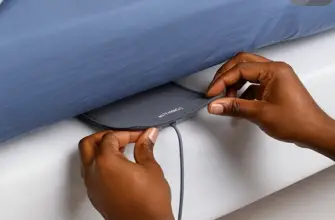Smell disorders refer to the reduced ability or complete loss of the sense of smell (anosmia), distorted smell perception (parosmia), or even phantom smells (phantosmia). While often overlooked, these issues can dramatically affect appetite, safety, and quality of life.
Age Groups Most Affected by Anosmia
| Age Group | % of Reported Cases |
|---|---|
| 0–17 | 5% |
| 18–34 | 25% |
| 35–49 | 30% |
| 50–64 | 25% |
| 65+ | 15% |
This chart highlights which age groups report anosmia most frequently. Adults aged 35–49 are the most affected, while children and adolescents (0–17) account for a small percentage of reported cases. Incidence also remains notable among those aged 18–34 and 50–64.
According to the National Institute on Deafness and Other Communication Disorders (NIDCD), around 13.3 million adults in the U.S. experience some form of smell dysfunction each year.
Common Causes of Smell Loss
Most Common Causes of Loss of Smell (Anosmia)
| Cause | Prevalence (%) |
|---|---|
| Viral Infections (e.g. COVID-19) | 45% |
| Chronic Sinusitis | 20% |
| Nasal Polyps | 15% |
| Head Trauma | 8% |
| Neurological Disorders | 7% |
| Aging | 5% |
This chart illustrates the most prevalent causes of anosmia (loss of smell). Viral infections, especially COVID-19, dominate as the leading cause. Chronic sinusitis and nasal polyps also play significant roles, while neurological issues, head injuries, and aging contribute to a lesser extent.
1. Upper Respiratory Infections
Viral illnesses like colds, flu, or COVID-19 are among the leading causes. Damage to olfactory neurons during infection can lead to temporary or prolonged smell loss.
- Key Symptom: Sudden or gradual inability to detect odors during or after illness.
- How to Recognize: If a person loses smell during a respiratory infection without nasal congestion, it may signal olfactory nerve involvement.
- Do You Need Testing?: Yes, if symptoms persist for more than two weeks after illness resolution.
2. Nasal and Sinus Issues
Conditions such as chronic rhinosinusitis, nasal polyps, or deviated septum can physically block odors from reaching sensory receptors.
- Key Symptom: Stuffiness, pressure around the eyes or cheeks, thick nasal mucus, and partial smell loss.
- How to Recognize: Smell often improves temporarily after nasal rinses or decongestants.
- Do You Need Testing?: ENT exam and nasal endoscopy are commonly needed.
3. Neurological Disorders
Diseases like Parkinson’s, Alzheimer’s, or multiple sclerosis often impair olfactory pathways. In some cases, loss of smell is one of the first clinical signs.
- Key Symptom: Gradual and unexplained decline in smell, without nasal symptoms.
- How to Recognize: Often noticed by others (e.g., failure to smell spoiled food or burning odor).
- Do You Need Testing?: Yes. Neurological evaluation, smell tests, and imaging (MRI) are recommended.
4. Head Trauma
Even mild concussions may damage the olfactory bulb or nerve, causing smell impairment.
- Key Symptom: Sudden loss of smell after a blow to the head or fall.
- How to Recognize: Typically occurs within hours or days of trauma.
- Do You Need Testing?: Absolutely. MRI or CT imaging is essential to assess damage.
5. Environmental Exposure
Prolonged exposure to toxins, smoke, or certain chemicals may degrade olfactory function.
- Key Symptom: Dull or distorted smells after chemical or smoke exposure.
- How to Recognize: Often overlooked, especially in occupational settings.
- Do You Need Testing?: Diagnosis usually requires a detailed history and UPSIT or Sniffin’ Sticks test.
6. Medications and Aging
Some antibiotics, antihistamines, and blood pressure drugs can alter smell. Additionally, 60% of individuals over age 65 report some form of sensory decline.
- Key Symptom: Slow, progressive decline in smell, sometimes with taste changes.
- How to Recognize: More common in older adults or those on long-term medications.
- Do You Need Testing?: Clinical review of medication history; smell testing can confirm.
How Is Smell Loss Diagnosed?
1. Sniffin’ Sticks Test
A standardized set of odor-dispensing pens used to assess identification, threshold, and discrimination ability. During the test, a trained clinician presents different scented pens one by one. The patient sniffs each pen and either identifies the odor or responds to a series of multiple-choice options. The test is non-invasive, takes about 30–40 minutes, and results are available immediately after evaluation.
- Accuracy: 8.5/10
- Average Cost: $150 – $250
2. UPSIT (University of Pennsylvania Smell Identification Test)
A scratch-and-sniff test where patients scratch a scent-impregnated area and choose the correct smell from four multiple-choice answers. The test is self-administered or supervised and takes approximately 20–25 minutes. Results are typically available the same day or within 24 hours if submitted to a lab.
- Accuracy: 9/10
- Average Cost: $30 – $50
3. MRI and CT Scans
Imaging procedures used to identify structural problems like tumors, nerve damage, or sinus inflammation. The patient lies still in a scanner while images of the brain and nasal passages are taken. The procedure can take 30–60 minutes, depending on the area examined. No pain is involved, though lying still can be uncomfortable for some. Results are usually ready within 1–2 business days.
- Accuracy: 9.2/10 for structural issues
- Average Cost: $600 – $1,500
4. Nasal Endoscopy
A minimally invasive procedure performed in an ENT office. A thin, flexible endoscope is inserted into the nasal cavity, often after applying a local anesthetic spray. It allows real-time visualization of obstructions, inflammation, or polyps. The procedure takes 10–15 minutes, with results available immediately. Mild discomfort or tickling sensation is common.
- Accuracy: 8.8/10
- Average Cost: $400 – $900
Real Case: Male, 62, Florida
Following a bout with COVID-19, the patient experienced prolonged anosmia. MRI revealed minor inflammation near the olfactory bulb. After three months of olfactory training, partial recovery was noted.
Modern Treatment Options
Olfactory Training
This non-invasive therapy involves daily exposure to a set of essential oils or strong natural scents such as clove, lemon, rose, and eucalyptus. Patients are instructed to gently sniff each scent for 15–20 seconds, twice a day, over a period of at least 12–16 weeks. The process is believed to stimulate olfactory receptor regeneration and enhance neural connections.
- Requirements: Patient motivation and consistency.
- Tools: Commercial kits like Smell Training (UK) or homemade essential oils.
- Effectiveness: 7.5/10 (higher in post-viral cases)
Corticosteroid Nasal Sprays
Used primarily to reduce inflammation from conditions such as allergic rhinitis or chronic sinusitis. Common over-the-counter and prescription brands in the U.S. include Flonase (fluticasone propionate), Nasonex (mometasone furoate), and Rhinocort (budesonide). Treatment usually involves one or two sprays in each nostril once daily for 2–4 weeks.
- Requirements: Prescription may be needed for stronger formulations.
- Side Effects: Nasal dryness, occasional nosebleeds.
- Effectiveness: 6.5/10 (higher in patients with identifiable nasal inflammation)
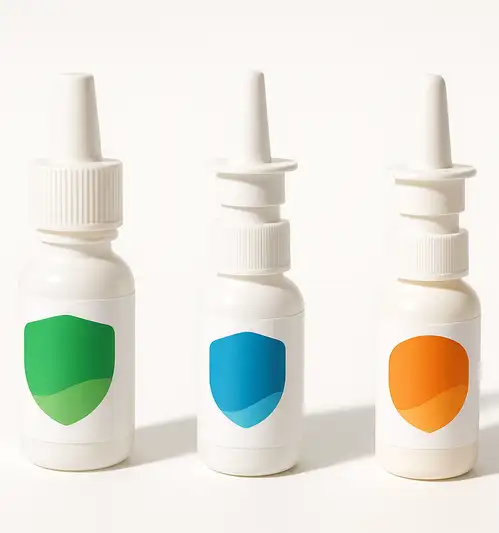
Surgical Options
Functional Endoscopic Sinus Surgery (FESS) is used to remove nasal polyps, correct deviated septum, or clear sinus pathways. The procedure is minimally invasive and performed under local or general anesthesia. Recovery typically takes 1–2 weeks, with full benefits observed within a month.
- Requirements: Imaging and ENT evaluation pre-surgery.
- Providers: Common in ENT practices and outpatient surgery centers across the U.S.
- Effectiveness: 8/10 (when obstruction is the root cause)
Neuromodulation (Experimental)
This cutting-edge approach involves implantable or wearable devices that deliver mild electrical stimulation to the olfactory nerve region. Devices like Stimwave and others under FDA investigational use are in early clinical trials. Sessions may last 20–30 minutes, a few times per week, for several months.
- Requirements: Enrollment in a clinical trial.
- Status: Not commercially available yet.
- Effectiveness: 6/10 (experimental, with promise for traumatic loss)
Supplements and Nutritional Support
Supplements such as alpha-lipoic acid (600 mg/day), omega-3 fatty acids (1,000–2,000 mg/day), and vitamin A (under physician supervision) are being studied for their potential to support neural repair and inflammation control.
- Brands: Nature’s Bounty, NOW Foods, Nordic Naturals.
- Effectiveness: 5.5/10 (adjunctive use only; more research needed)
Average Time to Recover Smell After Viral Infection (Days)
| Infection Type | Average Recovery Time (days) |
|---|---|
| Mild COVID-19 | 14 days |
| Severe COVID-19 | 45 days |
| Influenza | 10 days |
| Common Cold | 7 days |
| RSV | 11 days |
| Other Viral Infections | 9 days |
This chart compares the average number of days it takes to recover the sense of smell after different viral infections. Recovery from severe COVID-19 takes the longest, while milder infections like the common cold typically resolve much faster.
When to See a Specialist
| Symptom Duration | Likely Cause | Specialist to Consult |
|---|---|---|
| <2 weeks | Viral illness | Primary care or ENT |
| >4 weeks | Post-COVID, unknown causes | Otolaryngologist |
| Sudden onset | Head trauma, neuro disorder | Neurologist |
| Phantom smells | Tumors, neurodegeneration | ENT, Neurologist |
Editorial Advice
Reyus Mammadli, healthcare advisor, recommends anyone experiencing persistent smell disturbances for over three weeks undergo professional testing. “You’d be surprised how often people dismiss smell loss until it affects their nutrition or safety,” he explains. “Early intervention makes a big difference, especially in post-viral and traumatic cases.”
Our team also suggests:
- Using smell-safe cooking tools (like timers and smart stoves)
- Keeping carbon monoxide detectors up to date
- Maintaining nasal hygiene through saline irrigation
References
- National Institute on Deafness and Other Communication Disorders (NIDCD)
“Smell Disorders” – An overview of causes and prevalence of smell dysfunction in the U.S. adult population.
https://www.nidcd.nih.gov/health/smell-disorders - American Academy of Otolaryngology—Head and Neck Surgery (AAO-HNS)
Clinical guidelines for diagnosing and treating olfactory dysfunction, including surgical approaches.
https://www.entnet.org - University of Pennsylvania Smell and Taste Center
Details on UPSIT and other smell identification testing methods developed by the center.
https://www.med.upenn.edu/stc/ - Cleveland Clinic
Information about anosmia and its relationship with neurological diseases and trauma.
https://my.clevelandclinic.org/health/diseases/17760-anosmia - Johns Hopkins Medicine – Sinus Center
Overview of nasal endoscopy and sinus-related smell loss treatments.
https://www.hopkinsmedicine.org/otolaryngology - NIH – Clinical Trials Database
Current clinical trials involving olfactory training and neuromodulation technologies.
https://clinicaltrials.gov - Mayo Clinic
Causes and management strategies for smell disorders, including aging-related decline.
https://www.mayoclinic.org/diseases-conditions/loss-of-smell

